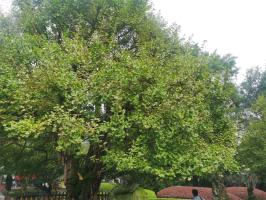Does Planting Trees Reduce CO2?
Climate change has become a pressing issue worldwide, and reducing the concentration of CO2 in the atmosphere is one way to combat its effects. Planting trees has been suggested as a solution to reduce CO2 levels, but does it really work? In this article, we will explore the relationship between planting trees and reducing CO2 emissions.
The Role of Trees in Carbon Sequestration
Trees play a crucial role in the Earth's carbon cycle by absorbing and storing carbon dioxide (CO2). During photosynthesis, trees use CO2 from the atmosphere to produce energy, releasing oxygen (O2) as a byproduct. Carbon is then stored in the plant tissues, such as in the trunk, roots, and leaves. This process is known as carbon sequestration.
Carbon is also stored in the soil beneath the tree, where it can remain for centuries. As a result, the act of planting trees can effectively remove CO2 from the air and put it back into its natural storage system. A single mature tree can absorb up to 48 pounds of CO2 per year, making it a powerful tool in the fight against climate change.
The Impact of Deforestation
Deforestation, on the other hand, has a devastating impact on carbon sequestration. When forests are cleared, the stored carbon is released back into the atmosphere. The trees no longer absorb CO2, and the soil loses its ability to store carbon. According to the World Wildlife Fund, deforestation and forest degradation are responsible for releasing up to 15% of all greenhouse gas emissions.
Thus, planting trees is not only effective in reducing CO2 but also necessary to combat deforestation and its impact on global warming.
The Limitations of Tree Planting
While planting trees has the potential to reduce CO2 levels, it is not a cure-all solution. Trees require time, space, and resources to reach maturity and become effective carbon sinks. Additionally, trees need to be maintained and protected from natural disasters to ensure they live a long life and continue to sequester carbon.
Furthermore, planting trees has limitations in scaling up to drastic levels. While planting vast numbers of trees can have a significant impact on an individual, community, or regional level, it may not be feasible or effective in reducing CO2 levels at the global scale.
Conclusion
Planting trees can be an effective method for reducing CO2 levels and combating climate change. Trees play a crucial role in carbon sequestration, and deforestation has a devastating effect on carbon storage. However, it is important to keep in mind the limitations of tree planting and consider other methods of reducing greenhouse gas emissions. A holistic and multifaceted approach is needed to address the challenges of global warming.

 how many times do yo...
how many times do yo... how many planted tre...
how many planted tre... how many pine trees ...
how many pine trees ... how many pecan trees...
how many pecan trees... how many plants comp...
how many plants comp... how many plants can ...
how many plants can ... how many plants and ...
how many plants and ... how many pepper plan...
how many pepper plan...






























